Not found on windows 7 what to do. Why the operating system was not found and the hard drive does not boot. Additional troubleshooting methods
One of the most terrible user errors is the one that appears when the computer is turned on and tells us on black BIOS screen, what "". When this message appears, our system will not be able to boot, and the only way out is to restart the computer by pressing "ctrl + alt + del", and you will most likely see this message again.
The problem with the error is that operating system is not displayed and therefore the BIOS cannot boot the Windows system. The reasons for this error are very varied, from a simple configuration error in the BIOS to a more serious problem that in the worst case forces us to completely format the computer. Therefore, we will analyze the main reasons and their solutions to eliminate the error "" ( An operating system wasn "t found).
Disconnecting external USB devices from the computer
If your computer has multiple internal hard drives, external drives, and USB sticks connected, it is likely that BIOS is trying to find the operating system in the wrong place... Therefore, not detecting the Windows system, it gives the error "Operating system not found".
- To fix this problem, you need to disable all external devices connected to USB ports and try again. We can also check our optical drive to make sure it isn't trying to load the wrong DVD.
If after doing this the problem is still not resolved, next step will go to BIOS settings.
Changing BIOS Boot Priority
Go to BIOS configuration by pressing F2, F12 or Delete. After that go to the configuration section Boot and put on the first place in the column Priority HDD on which the working and main operating system is Windows. IN different versions BIOS it is called differently, but you are looking for a word with a combination of Priority, which means "priority loading". Here are some names from different BIOSes: Hard Disk Priority, Boot Device Priority, Hard Disk Boot Priority.
After you have set the boot priority from hard disk on which your system is located, do not forget to save the settings with the F10 button and restart the computer to make sure "whether the system was found when you turn on the computer."

Enable or disable Secure Boot
If you are using modern computer with an operating system such as Windows 8 or Windows 10, then perhaps the reason our Windows won't start is in the wrong UEFI secure boot setting.
Go back to BIOS, find the configuration section Secure Boot (Secure Boot) and deactivate it or activate it if it is disabled to check if the error "The operating system was not found at computer startup" is gone.
In different BIOS versions or UEFI, the location of the settings looks different, but in any BIOS version you are looking for the column Secure Boot, try to disable or enable.

Reset BIOS to factory settings
At the bottom of the BIOS menu, you will see a key for default settings or reset BIOS... On my car it is F9... Confirm your decision when prompted and restart your computer.

If you did not find an approximate button, like F9 for resetting the settings to factory defaults, then look for the line Load Setup Default and reset the BIOS.

If your operating system hard drive is placed first, but the computer still does not boot, it is possible that some of the initial sectors of the disk were damaged, such as the main boot record (MBR), DOS boot record(DBR), or Boot configuration database(BCD).
Repairing these sectors is fairly straightforward. All we need to do is create an installation USB flash drive and through it enter Extra options downloads.


Enter the following commands in CMD in order by pressing enter. Each command may take time to complete.
- bootrec.exe / fixmbr
- bootrec.exe / fixboot
- bootrec.exe / rebuildbcd

Activate the Windows partition
It is possible that the partition on which Windows is installed is disabled. You can fix this using Windows' native diskpart tool. To complete the following steps, you will need a USB media to install Windows again. Run the command line, as described above, through the recovery disk or the Windows installation flash drive and type the following commands in the command line:
- diskpart- Launching the tool.
- list disk- List of connected drives to the computer.
- select disk 0- Selecting the hard drive on which you want to activate the partition. In my case, the primary hard drive is 0.
- list volume- Shows partitions on the selected hard drive.
- select volume 2- Choose local disk to activate. Choose the one where the widows system itself is installed.
- active- Activate the section.
Restart your computer and check if the error is gone when turning on the computer An operating system wasn "t found. Ttry disconnecting any drives that don" t contain an operating system. Press Ctrl + Alt + Del to restart which means operating system not found, press ctrl + alt + del to restart.

Hello admin, an inscription appears on the monitor when the computer boots Operating System not foun d, the error appeared after trying to overclock the computer's processor. I tried to find an answer on various forums on the Internet, basically it is advised to reset the UEFI BIOS settings to default and boot from the "kolobok" and see if the operating system files are in place, they also advise to plug the information cable connecting the hard drive with motherboard.
Gingerbread man, I don't know what it is (this is a Live CD-note administrator), but the cable did not overplug it, but even changed it and tried to connect it to other SATA connectors on motherboard but didn't help. What else can you do?
Operating System not found
Hello, friends! Since I work in a regular service center, I often deal with this problem. And in this article I will just give real examples of this error and tell you how to deal with them. This error comes out Operating System not found (no operating system files found) or other (reboot and select the correct boot device or insert bootable media) for reasons that can be divided into two parts. Basically, this error is associated with "iron" problems: the SATA data cable has gone, a faulty hard drive, wrong setting BIOS, and even a faulty power supply. But this error can also appear due to various violations in the boot sector of the hard disk and the boot files of the operating system itself. Windows systems.
First, the Operating System not found error may appear due to the fact that the BIOS has incorrectly set the boot priority of the computer, that is, the boot is not set from the hard disk on which the operating system is installed, but from DVD-ROM or even from FDD (floppy -disk drive), remember what the last actions you performed with your computer, maybe yesterday you changed the priority of the boot device in the BIOS and booted your laptop from a USB flash drive, then forgot to set the boot from the hard drive, as a result, the next time you boot the computer or laptop, it may exit Operating System not found error. and set the priority to boot from the hard disk. Secondly, pay attention to whether a USB flash drive is connected to your computer or laptop, it is quite possible that the computer wants to boot from it, but it is not bootable at all. Thirdly, maybe you recently disconnected your hard drive and went with it to your friends to exchange files, check with the computer turned off if your hard drive is securely connected with a SATA data cable to the connector on the motherboard, if there is another SATA cable, try using it or simply plug the hard drive into another SATA port on the motherboard.
Fourthly, immediately after installing the operating system, many users, without the appropriate knowledge, begin experiments with BIOS, who wants to overclock the processor, and who just "study" new BIOS UEFI, and who needs to set the computer to boot from a disk or flash drive. As a result, users very much change the initial and workable BIOS settings, but not everyone knows how to return them to their original position.
A simple example related to our error: in almost any BIOS, including the most modern UEFI, there is an option responsible for the operation of the controller hard drives, in most cases it is called "SATA Configuration" or SATA Configuration, this option can be in AHCI or IDE position. So, AHCI is modern technology hard drives and solid state drives SSD interface SATA II and SATA III. On all modern UEFI BIOS, the SATA Configuration option is set to AHCI by default and it turns out that when you set to new computer or laptop operating system Windows, then AHCI is enabled. After installing the operating system, some users accidentally or intentionally turn off AHCI in the SATA Configuration parameters and turn on the IDE, as a result, when the computer or laptop boots up, it comes out blue screen or the Operating System not found error. To solve the problem, reset the UEFI BIOS settings to default and try to boot the operating system.

Sixth, your hard drive may simply be faulty. Note. Is your hard drive detected in BIOS. If not, then you need to look for the reason for this misunderstanding. In this case, pay attention to the solutions already described in paragraph 4 of this article, reset the BIOS to default settings, reconnect the SATA data cables or connect the hard drive to another connector on the motherboard, if this does not help, you can try to connect the hard drive to another computer and see if your hard drive is detected in the BIOS of another computer, if not either, the hard drive is probably faulty, to solve the problem, contact service center.
Of course, I understand that on a laptop it will be difficult for an ordinary user to remove the hard drive, in this case you just need to limit yourself, if after that the hard drive is also not detected in the BIOS and the laptop will display the Operating System not found error when booting, do not do anything else and contact the service center. If the hard drive is detected in the BIOS, then you should try to restore boot Windows(as written in point # 5), if nothing works, then you need to load the laptop from any Live CD and copy everything important files from hard drive to portable USB hard drive, then .
Once in my practice, I had to deal with this error and imagine, the whole thing was decided by replacing the power supply. because of faulty unit power supply in the system has ceased to be detected by the hard disk and at boot it began to exit given error Operating System not found, after replacing the power supply, everything returned to normal, I described this and many more problems in the article.
Probably, there is no need to explain how unpleasant the situation is when the user turns on the computer or laptop to boot and instead of the usual start, the system writes Operating System not found on the screen for no reason. For many users, this is a real shock. How so? Yesterday everything worked ... What could have happened, and how to fix this situation, we will now see.
What does the Operating System not found error mean?
If you look at the message itself, it is easy to translate it as "operating system not found." But the problem is that the user is absolutely sure that it exists. And here computer system he does not share such confidence with the user, because he simply does not find the components responsible for loading the system.
In general, such situations most often manifest themselves, for example, when the user removed the hard drive, replaced it with a new one. Maybe the hard drive just failed, but you never know what.
Possible causes of occurrence
If you suddenly get such an incident, and the system constantly displays the message Operating System not found (Windows 7, 8, etc.), first of all, do not panic. To begin with, just check, maybe a flash drive is inserted into the computer or laptop, and in the BIOS settings, the priority for loading is the USB device.

If the hard drive was removed or changed to a new one (this applies to stationary computers), it may very well be that when it was reconnected, the corresponding loops were incorrectly or loosely connected. Let's see what can be done in such a situation.
Basic BIOS settings
The most in a simple way changes BIOS settings may become a reset of all settings to the factory default (Default). Any BIOS version has this setting.

As a last resort, you can simply change the boot priority in the Boot Device Priority or Boot Sequence section, and set the hard drive as the first (main) boot device (boot device).

It happens, however, that the hard disk is detected in the BIOS, but the boot is still not performed, and the system again and again issues the Operating System not found warning. What to do in such a situation? First, see if there is an exclamation mark next to the hard disk model. It signals that the device in the system, although present, is simply disabled or not involved.

As a rule, in most BIOS versions, there is a special item help field on the right (Specific Item Help), which contains a keyboard shortcut that allows you to enable or disable any component. The most probable combination is Shift + 1. But here it all depends on the manufacturer (combinations may be different).
Switching the operating modes of the hard drive in the BIOS UEFI
On the other hand, if the Operating System not found warning appears on a laptop, where it is quite problematic to remove the hard drive, you should pay special attention to the mode settings work hard disk. As an example, consider the settings for the newest UEFI systems although they can be used in other versions without any problems.

In general, there are two main modes in the SATA configuration: AHCI and IDE. When initial installation"Operating systems", as well as in the default settings, the AHCI mode is enabled. When you switch to the IDE, no matter how hard you try, you will not be able to install Windows on the hard drive.
The same applies to the moments when users, at the end of the installation process, either unknowingly, or accidentally include exactly IDE mode... As already clear, the system produces the line Operating System not found. By the way, even if in this moment put another fully functional "screw", without changing the SATA settings to the initial ones, it will not work either.
Therefore, it is worth immediately advising users to change such settings only as a last resort, when it is really necessary.
Repairing the Windows bootloader
There are also frequent cases when the message "Operating System not found" appears when the Windows bootloader is damaged, which is associated only with errors on the hard disk, for example, due to improper shutdown. At the same time, as it is already clear, the whole system can “fly off”.
In such a situation, you can try to restore the bootloader, and at the same time check system disk or a section for errors. To do this, it is always advisable to have an original installation disc or a system recovery disc at hand.
Here you will need to set the optical drive in the BIOS as the first priority device for booting, and then use the recovery console. Note that in this variant there is no question about Windows recovery from the control point. It still won't help, and the Operating System not found warning will appear again.

Here you need to use boot recovery mode or command line, which is preferable. In it, you need to enter two sequentially basic commands: bootrec.exe / FixMbr and bootrec.exe / FixBoot, after each pressing "Enter". If such a sequence does not help, in addition, you can add the bootrec.exe / RebuildBcd command.

Before performing such actions, it is strongly recommended to check the disk for errors with their automatic correction (chkdsk commands/ f / r or chkdsk / f / x / r). You can also use the chkntfs / x c: checker if you have a file NTFS systems in system partition(drive "C").
If all else fails
However, if all the above methods of correcting the situation do not help, then you should definitely make diagnostics of hard disk. But if it is not a problem to remove it for stationary computers, then with a laptop you will have to contact the nearest service center or workshop and not try to remove it yourself.
As it is already clear, if the hard drive "fell down", there is nothing to be done, you will have to change it to a new "hardware", and then install the "operating system" again. You can, of course, try the operation of the HDD Regenerator utility on it, but it is rather difficult to guarantee one hundred percent success in hard drive recovery.
Operating system users Windows already used to see messages with some kind of error instead of the loading screen from time to time. The types of problems are different, but in any case they require urgent action. The operating system not found error can be found both on a laptop and on a stationary computer. The user sees this inscription on a black background, after which the system does not boot. More precisely, the computer reports its absence. Of course, this is not the case, and it is possible and necessary to fix the problem. Let's figure out what was the reason and how to proceed.
Eliminating the Operating system not found error.
As already mentioned, the "operating system not found" error literally means "the operating system was not found." There may be several reasons:
- Hard disk malfunction or incorrect connection of the loop;
- Incorrectly set BIOS parameters;
- Problems with the power supply or motherboard.
Let's consider each aspect in detail.

Error correction methods
What to do in the first place when the "operating system not found" appears? You can find out the reason step by step, checking all the components necessary for loading the OS in turn.
Better to start with the most harmless - checking the settings. Most often, this error occurs in cases of an incorrectly set hard disk priority. For example, a USB flash drive is inserted into a computer or laptop, and the BIOS has priority on USB drives. Also, the reason may be an incorrectly connected cable, especially if you changed or reconnected the hard drive the day before.
To check the priority for loading, do the following:
- We go into the BIOS;
- Select the Boot tab (sometimes Advanced);
- Checking where it stands hard drive HDD(should be on the first);
- If necessary, we rearrange it using F5, F6 or arrows, depending on the BIOS version.
ADVICE. If the settings are correct, try resetting the BIOS. Because of this, new errors will not appear, but this particular one may disappear. We will describe how to do this below.
We reboot the system and check if it helped. If not, let's move on.

Hard drive problems
In cases where the error “an operating system wasn’t found” is still displayed, or the BIOS does not see hard drives at all, then there can be two reasons:
- Disconnected hard drive or loop;
- The hard disk is defective.
In the first case, you need to completely turn off the PC and recheck all connections. In the second case, it remains only to connect the hard drive to another computer and see if the error occurs there.
ADVICE. The density of the elements in the laptop does not allow the cable to move away, so the likelihood of solving the problem on a laptop in this way is extremely small.
So, you double-checked everything, and the problem persists. Do not panic, there are a couple more ways to resolve the issue.
Reset BIOS settings and install the latest firmware
As we mentioned earlier, a factory reset can help. They are called Default and are available on all BIOS versions. There are times when the system sees the hard drive and detects it, but does not load it. The first thing to do is check its status. If in front of the hard disk there is Exclamation point, then this signals that the disk is disconnected or not involved. Enabling it is simple:
- Choosing a problematic hard drive;
- Find the Specific Item Help field (this is the device help tab);
- We look at what keyboard shortcuts you can turn on a specific device.
ADVICE. The combinations differ on different BIOS versions, but most often it is the Shift + 1 combination.
After that, the hard drive should turn on, and the computer should start without problems. If this does not happen, try other methods.

A damaged Windows bootloader can also cause not only an error, but a complete crash of the system. You can try to restore it using installation disk or a recovery disc.
- We insert the source into the drive;
- We launch BIOS and select the optical drive there as the priority device for loading;
- We select the recovery console.
- We are trying to restore the boot mode and check the disk for errors with the ability automatic recovery.
- Alternatively, you can use command line by entering bootrec.exe / FixMbr there, and then bootrec.exe / FixBoot. Do not forget about the Enter key after each line.

ADVICE. If your C drive has an NTFS file system, try using chkntfs / x c: as a checker.
After trying everything and not getting a result, be sure to diagnose your hard drive. In the case of a laptop, you will have to go to a workshop, as independent attempts to remove it can aggravate the situation. Try using the utility HDD Regenerator to restore the hard drive, but the success rate is low. Well, the faulty hard drive must be replaced and the entire operating system must be reinstalled.
We hope you did not have to resort to the help of computer services and managed to fix the problem yourself. Ask your questions in the comments.
Operating system not found - This error means that the computer cannot find Windows and your computer is unable to find and load the Windows installation because there is a hardware or software problem.
Laptops when they cannot find the operating system create additional complications compared to desktop computers because they have fewer emergency options and no hardware parameters to return if a problem arises.
Failure to Boot Record
The hard disk of the computer has a "Master Boot Record" integrated with Windows installation, which after the BIOS controls the system boot process operating.
Most laptops are equipped with a "recovery partition" most often configured on a hard drive, less often on a DVD.
When booting from partition recovery, you need to run the "Automatic recovery" option in the "System Restore" menu, Windows will be able to recover the MBR.
You can also fix the operating system by reinstalling Windows if “ automatic repair»Fails to fix MBR.
Bad BIOS configuration
- this is the first thing your computer turns to when it turns on, configures the hardware and prepares it to load the operating system.
Bad BIOS configuration can cause the computer to ignore the hard drive, resulting in an "OS not found" error.
You can enter the BIOS by pressing the "Setup" key, which is usually displayed on the boot screen - if the computer does not detect it, then press the F1, F2, F8, Esc, or Delete keys.
After entering the BIOS, select the "Restore Defaults" option and the laptop will recognize the hard drive again.
Some BIOS errors require reset BIOS by removing the CMOS battery. This process can be much more difficult on laptops because it may require removing the keyboard and the entire case to access the battery.
The operating system is damaged
The laptop may show an "OS not found" error if the OS boot is corrupted. Malicious programs, viruses and hardware bugs can crack the code needed to identify and boot Windows.
Installation damage can be repaired by running the "automatic repair" tool or "" - this can be found in partition recovery or by booting from the Windows installation disc.
In the worst case, reformatting the hard drive and reinstalling windows from scratch can fix this problem.
Hard drive and motherboard failure
The laptop may not be able to boot Windows because the hard drive or motherboard is damaged.
Laptops present a more difficult test problem in this case, because they only have one place for connect hard disk.
So if the motherboard port is out of order, it must be replaced. If the hard drive makes clicking sounds, it is most likely broken and needs to be replaced.
You can test the hard drive for health by removing it from the laptop and connecting it to another computer either internally or through an external enclosure.
If another computer cannot recognize the hard drive, then most likely its system is broken, but if the computer sees it, then the problem is most likely in the motherboard of your laptop - it will have to be repaired. Good luck.
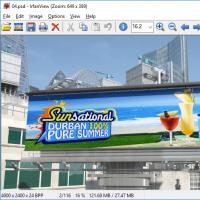 The best programs for reading and editing: do without Photoshop psd extension than open
The best programs for reading and editing: do without Photoshop psd extension than open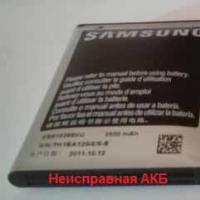 Why is my phone charging slowly?
Why is my phone charging slowly?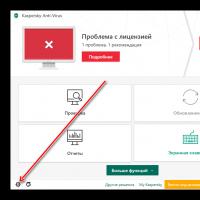 How to add a folder to an exception in Kaspersky How to add exceptions to a program in Kaspersky
How to add a folder to an exception in Kaspersky How to add exceptions to a program in Kaspersky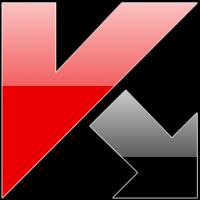 Installing Kaspersky Security Center Installing the Administration Server kaspersky security center 10
Installing Kaspersky Security Center Installing the Administration Server kaspersky security center 10 How to take a screenshot on a computer: All possible ways How to take a screenshot of a photo
How to take a screenshot on a computer: All possible ways How to take a screenshot of a photo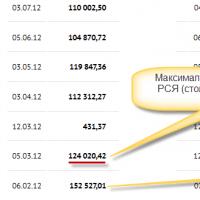 Screenshot - what is it and how to make a screen Ways to take a screenshot on a computer
Screenshot - what is it and how to make a screen Ways to take a screenshot on a computer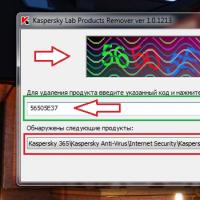 Free renewal of the Kaspersky Anti-Virus license Suspension of protection from Kaspersky Gadget
Free renewal of the Kaspersky Anti-Virus license Suspension of protection from Kaspersky Gadget